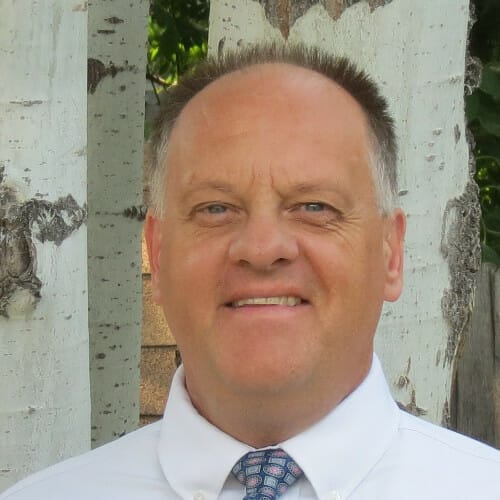October 13th, 1999
“I just had a very strange phone call … your wife called me.” Little did I know, my life was about to change.
Back in the day before cell phones and personal chats through a constant stream of text messages, I was completing my master’s degree in medical anthropology. My wife, Dianne, and I had two small boys – the youngest was 9 months old. On Wednesdays, when I was at school, I had a good chunk of time between my afternoon classes and a night class. During that break, I would frequently sit in the commons area of the Department of Anthropology building. It was a former dormitory, converted into offices and classroom space. The commons was an open space that had much less foot traffic and was usually more quiet than the main library on the campus.
This particular Wednesday, a professor who often saw me studying in the Anthropology commons, came to me and said “I just had a very strange phone call – your wife called me. She said she is very sick and wants you to come home.” I thanked the professor, walked to my car and drove home. It was a bit of a walk from the Anthropology building to where I had parked and during that walk, I was nervous and upset, but also a little frightened. Dianne would have never tried to call if there wasn’t something very wrong so I knew it was serious but because I didn’t have a cell phone at that time, I wasn’t able to speak with her directly. I do remember that even though that parking lot was almost 1 mile away and normally took about 15 minutes, I walked much faster that day – I was anxious to get home to see what was happening.
When I got home, it was clear that Dianne was, in fact, very sick. She had been experiencing diarrhea for at least 24 hours and was in lots of pain. She had taken Imodium AD to try to stop the diarrhea, to no avail. Earlier that day she had tried to call a gastroenterologist but was told she couldn’t get an appointment for at least a week. So she went to an urgent care center instead, where she had given a stool sample and then was sent home. By the time I got home she had gotten worse and was now passing blood in her stool. Dianne was a ballet instructor and had called a student’s mother whose husband was a cardiologist early in the day. She convinced Dianne to try to get in with the gastroenterologist, then to go to the urgent care center earlier, and finally to go to the ER later that night. She was already there to watch the boys and was waiting for me to take Dianne to the ER. In the ER as the gastroenterologist (the same one that Dianne had tried to make an appointment with earlier in the day) entered the room, Dianne stood to speak with him, but passed out instead. Her blood pressure had dropped when she stood up because she was dehydrated.
She was admitted and given an IV to hydrate her and also give her some pain medication. The gastroenterologist started running tests on her ì
stool sample. That night, I stayed at the hospital as well. It appeared that she was going to stabilize and that all would be well the next day. However, her symptoms did not improve the next day and she was in even greater pain than before, and passing only blood now. They changed her medication to something stronger. At this point, I remember my brother driving from a nearby town and picking up our boys and telling me, “I’ve got them – don’t worry. Just worry about Dianne.”
In the evening of that second day, I returned home because Dianne was now drifting in and out of consciousness. I never hesitate to tell people that I take my religious convictions very seriously and that night, alone in our bed as well as in our house, I distinctly remember praying, “God, please don’t take Dianne! I am not strong enough to raise these boys alone.” At this time, no diagnosis had been made. The medical staff were treating Dianne and trying to assess multiple tests for explanations.
When I returned to the hospital the next morning, I found that after two nights and a full day in the hospital, things had not changed much. I was feeling pretty stressed when I went back to the University and spoke with each of my professors. Thankfully, they were all gracious and told me not to worry about school right now.
With two full days under her belt and seemingly no diagnosis in sight, Dianne started hallucinating from the pain meds, and had to be given additional meds to counteract the pain meds. The gastroenterologist decided it would be beneficial to also conduct a colonoscopy at this time. During the colonoscopy he found multiple lesions in her lower intestines that were indicative of Crohn’s Disease. We thought we had a diagnosis at this point. After the procedure Dianne was beginning to be more alert now and began to accept that this might be a life-long disease she would have to deal with.
Day three began well. Dianne’s passing of blood had begun to slow down. The gastroenterologist returned and as is often the case, the doctor started with, “I have good news and I have bad news …” Oh boy! We braced ourselves. “The good news,” said the Doctor, “is that you do not have Crohn’s Disease. The bad news is that you’ve contracted E. coli O157:H7.” I had no idea what this combination of letters and numbers meant. The E coli test takes 72 hours to complete and it had come back positive. Dianne was surprised and relieved because she had begun to come to terms with the fact that she would have to live with Crohn’s, but unsure what it meant to have E. coli.
He went on to explain that because Dianne had taken the Imodium AD it had trapped the bacteria in her intestines and caused the lesions. He said they would continue to monitor her and see how she was doing tomorrow. At this point, I was starting to feel less anxious – we had a diagnosis and we knew how we were going to proceed. But then, I went home and started to research and discovered that E. coli can cause serious, life-long complications including kidney failure which could still be fatal. Again, I found myself praying that God would, somehow, heal Dianne and all would be well.
We felt as if a great burden had been lifted as Dianne quickly and somewhat miraculously began regaining strength during the evening of day three. She was eating and the passing of blood had stopped. She was released from the hospital on day four. For the next few days and weeks, Dianne slowly recovered.
Now that she was gaining her strength back and feeling herself, we decided we needed to contact the local health department. We were told that because this was an isolated case – meaning there were no other reports of E. coli in the community – they were not able to conduct a full investigation into how she contracted the disease. So I began, on my own, a very amateur investigation and discovered some of the possible causes of the disease.
Three factors stood out to me:
- One, we had visited a State Fair about a week before she became sick, so environmental exposure was a possibility. However, where this was an isolated case, I quickly ruled out the Fair as a likely source of exposure. If the Fair had been the source, it is very likely that other people would have been exposed and would have gotten ill.
- Two, we had gone to a restaurant about 4 days before she became sick. But she had ordered seafood – an unlikely source of E. coli contamination – and it had been boiled – a cooking temperature that would have served as a kill step for any E. coli bacteria. She also ordered a salad and we had watched some of the workers bring in bagged salad into the restaurant as we were waiting to be seated. Did they wash it?
- Three, and the most likely explanation – I had cooked some bratwursts about 3 days before she was sick.
At that time, I had no real understanding of food safety and the meaning of E. coli O157:H7 and it is very possible that I did not thoroughly cook the bratwursts and, consequently, this was the primary factor responsible for Dianne’s illness. I honestly don’t remember how I cooked them – whether it was on a grill or on the stove. I know I never would have checked the internal temperature with a thermometer nor would have felt any reason to do so. I urge you to learn food safety basics for handling and cooking foods. Dianne is the enforcer of cooking temperatures at our home now!
Once Dianne’s medical situation began to resolve, I went back to the professor who had first alerted me of the situation. I explained to her that, because I was close to finishing my MA, I still intended to defend my thesis. Once that was done though, I wasn’t sure what my next step should be – continuing with further graduate work or not. She advised me to consider enrolling in a Master of Public Health (MPH) program that was also offered at the University. And, so I did, specializing in Environmental Health.
Later, when I was employed at the local health department, I began working in the food safety program with the specific intention of trying to help others avoid situations similar to what Dianne and I had experienced. Our E. coli experience was truly frightening, and we were extraordinarily fortunate that our situation turned out the way it did! Now, more than 20 years later, Dianne experiences bouts of irritable bowel syndrome, which we believe is related to the E. coli sickness years ago, but her latest colonoscopy was normal!
Having now worked in public health and food safety for nearly 20 years, I have met many people who have experienced far worse symptoms and long-term complications from E. coli and other foodborne diseases. And, sadly, I also know families who have lost loved ones.

Now, more than 20 years later, I am still passionate about food safety. My career was shaped by this incident and I now serve as the Vice President of Food Safety for the National Restaurant Association. My heart aches for anyone who finds themselves in this position, as I know our food safety efforts will not always prevent every possible situation. I urge all to learn basic food safety principles and know how to protect yourself and your family members. If you have experienced some type of foodborne illness, share your story with STOP and consider donating to organizations that, like STOP, are committed to reducing – and hopefully ending, foodborne illness events.
Although my team and I know that we cannot prevent every single instance of foodborne illness, it is always our hope that, today, we prevent one more!



